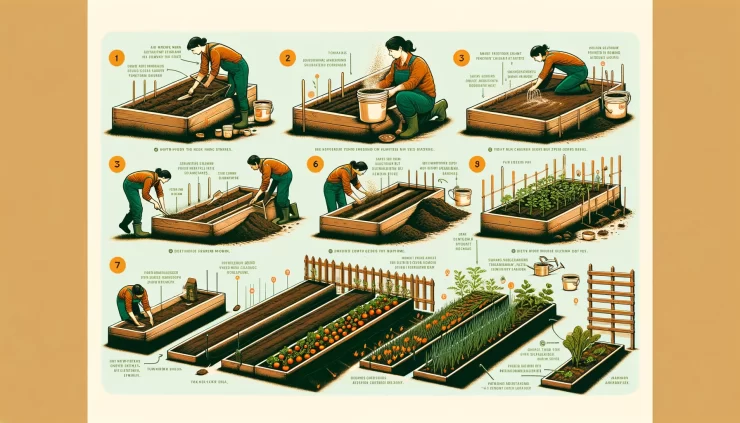Raised garden beds are a popular and practical way to grow a wide variety of plants, from vegetables and herbs to flowers and shrubs. They offer several advantages, including improved drainage, better soil quality, and ease of maintenance. If you’re new to gardening or considering adding raised beds to your outdoor space, this guide will walk you through the steps to successfully plant in a raised garden bed.
Materials You’ll Need:
Raised Garden Bed: Choose a suitable raised bed or build one using wood, metal, or composite materials.
Soil: High-quality garden soil or a mix of topsoil and compost.
Garden Tools: Shovel, rake, garden trowel, and gloves.
Plants or Seeds: Decide what you want to grow and acquire the appropriate plants or seeds.
Mulch: Optional, but it helps retain moisture and suppress weeds.
Watering Can or Hose: For regular watering.
Fertilizer: Depending on the plants you choose, you may need a suitable fertilizer.
Step-by-Step Guide:
Select a Location:
Choose a sunny spot for your raised garden bed, as most plants thrive in full sun.
Ensure that the location has good drainage to prevent waterlogging.
Choose the Size and Shape:
Determine the size and shape of your raised bed based on available space and your gardening goals.
Raised beds are often rectangular or square, but you can be creative with shapes.
Prepare the Bed:
If you’re building a raised bed, assemble it according to the manufacturer’s instructions.
Ensure that the bed is level and stable.
Fill with Soil:
Fill the raised bed with high-quality soil or a mixture of topsoil and compost.
The soil should be loose and well-draining.
Plan Your Planting:
Decide which plants or seeds you want to grow in the raised bed.
Consider plant spacing and placement to optimize growth.
Plant Your Garden:
Use a garden trowel to dig holes or furrows for your plants or seeds.
Follow planting instructions for the specific plants you’ve chosen.
Water the plants thoroughly after planting.
Apply Mulch (Optional):
Mulch the surface of the raised bed with a layer of organic mulch, such as straw or wood chips.
Mulch helps retain moisture and suppress weeds.
Watering and Maintenance:
Water your garden bed regularly, keeping the soil consistently moist but not waterlogged.
Monitor for signs of pests or diseases and take appropriate action if needed.
Fertilize as necessary, following the recommendations for your chosen plants.
Harvest and Enjoy:
As your plants grow and produce, harvest your crops regularly for the freshest and tastiest results.
Enjoy the fruits, vegetables, herbs, or flowers from your raised garden bed.
Benefits of Raised Garden Beds:
Improved soil quality.
Better drainage.
Reduced risk of soil compaction.
Easier access for planting, weeding, and harvesting.
Enhanced aesthetics in your garden.
Planting in a raised garden bed is a rewarding and efficient way to cultivate a wide range of plants. Whether you’re a beginner gardener or a seasoned pro, raised beds offer numerous advantages and can help you achieve a thriving and beautiful garden. Follow these steps, select the right plants, and enjoy the pleasures of gardening in your raised bed.






Add comment